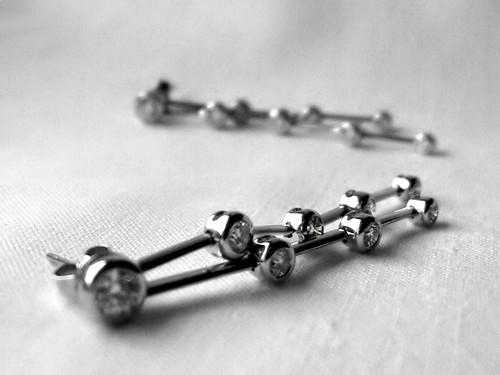
While, not all silver jewellery has a hallmark, many high quality pieces from established silversmiths in the UK will. Saying this, not all pieces of high quality silver jewellery will have hallmarks, this doesn’t make them less attractive!
United Kingdom – The Most Stringent Rules
The United Kingdom has one of the most regulated and stringent in the world. Set by a designated assayers office, a series of small marks are punched into the silver, usually on the reverse of jewellery and inside of trinket boxes et cetera. The punch is designed to offer a quick reference, but will not affect the overall look of the piece.
There are four hallmarks that make up the string of information to gain a background of a piece of silver, which quantifies the quality, the year of production and where the piece was made. Here are the four silver hallmarks in more detail:
Assayer’s Mark: This will appear first in the string of symbols from left to right, indicating the quality of the silver. The mark to indicate sterling silver is a lion, which will be found on 925 silver jewellery, the purest silver that can be used in jewellery making. If there is no Maker’s Mark, the piece might be silver-plate or from outside the UK.
City Mark: Next in the string of hallmarks is the City Mark, which tells us where in the world the which the piece was assayed. There is a whole host of different symbols from Birmingham’s anchor to the leopard head of London. Other countries have many other City Marks too.
Maker’s Mark: Self explanatory, the Maker’s Mark shows who produced the piece. This was originally introduced to prevent forgery, meaning that the piece could be traced back to the original maker. While older pieces can be pictorial, these are often the maker’s initials.
Date Mark: The Date Mark was compulsory until 1998, but would indicate when the piece was made from a series of letters of differing sizes and fonts.
Duty Mark: If you are looking to date a piece of silver, and you find a Duty Mark, this will narrow down when the piece was produced. This mark was used between 1784 and 1890, showing that the item had been taxed by the crown. The Duty Mark changes to the profile of the reigning monarch of the time, from King George III to Queen Victoria.
Hopefully this will give an overview of what to look for when finding out more about sterling silver.
Parriss Jewellers have been offering the purest form of 925 Silver jewellery since 1892, with a range of designs utilising bespoke precious stones, agates and enamel.
